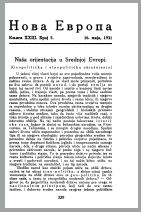
We kindly inform you that, as long as the subject affiliation of our 300.000+ articles is in progress, you might get unsufficient or no results on your third level or second level search. In this case, please broaden your search criteria.

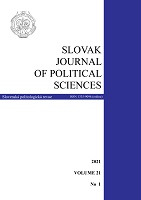
Review of: Eštok, G. (2020). (Ne)dávne hľadanie strednej európy. (in English: (Un)Delayed Search For Central Europe). Košice: Univerzita Pavla Jozefa Šafárika v Košiciach, 2020. 192 pp. ISBN 9788081529245.
More...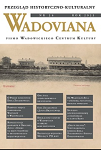
The article is about Janina Brzostowska (1897-1986) – a polish poet, writer, translator and her relationship with Emil Zegadłowicz (1888-1941) – a poet and a playwriter. I started from her literary achievements and published poems and novels. Then I described members of the „Czartak” group (Emil Zegadłowicz, Edward Kozikowski, Tadeusz Szantroch, Janina Brzostowska) and their connections. My article mainly touches the type of relationship between Janina Brzostowska and Emil Zegadłowicz. I analyzed it from different perspectives: friendhip, artistic dependence and master-disciple relationship. The result of my resarch indicates artistic dependence. Emil Zegadłowicz was an experienced poet and a famous man who supported young poets in literary community. On the other hand, Janina Brzostowska made the group’s image more attractive and increased the audience which needed sensitivity and gentleness. In my work, I cite the opinions of various specialists in the field of literature and humanities and I cite quotes from the family members: Witold Brostow - Janina Brzostowska’s son and Ewa Wegenke, the granddaughter of Emil Zegadłowicz.
More...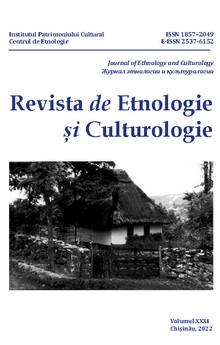
Review of: Marushiakova E., Popov V. (Eds.). Roma Voices in History. A Sourcebook. Roma Civil Emancipation in Central, South-Eastern and Eastern Europe from the 19th Century till World War II. BRILL, Ferdinand Schdöningh, 2021, 1104 p.
More...
In 1929 Karol Lanckoroński (1848–1933) donated his collection of scientific photographs to the Polish Academy of Arts and Sciences. Among the photographs of works of art and archeological relics in that collection we can also find prints of ethnographic nature, including photographs by Alfred Silkiewicz, a photographer with connections in Ternopil. On 6 July 1887 the heir to the throne Archduke Rudolph visited Ternopil and saw an ethnographic exhibition designed specially for his visit in the municipal garden. The central figures of the exhibition were residents of minor towns of Eastern Galicia brought to Ternopil, dressed in regional costumes. The text focuses on the circumstances of taking those photographs and on their significance as a source for researching the history of Galicia and its residents.
More...
The paper presents an eminent Polish librarian and historian Fryderyk Papée (1856–1940). He was a long-time staff member and later deputy head of the University Library in Lviv. In the years 1905–1926 he was the head of the Jagiellonian Library in Kraków. The paper discusses Papée’s services as a reformer of those two libraries as well as the Library of the Polish Academy of Sciences and the Czartoryski Library in Kraków. The author also presents Papée’s contribution to erecting new buildings of the University Library in Lviv and the Jagiellonian Library.
More...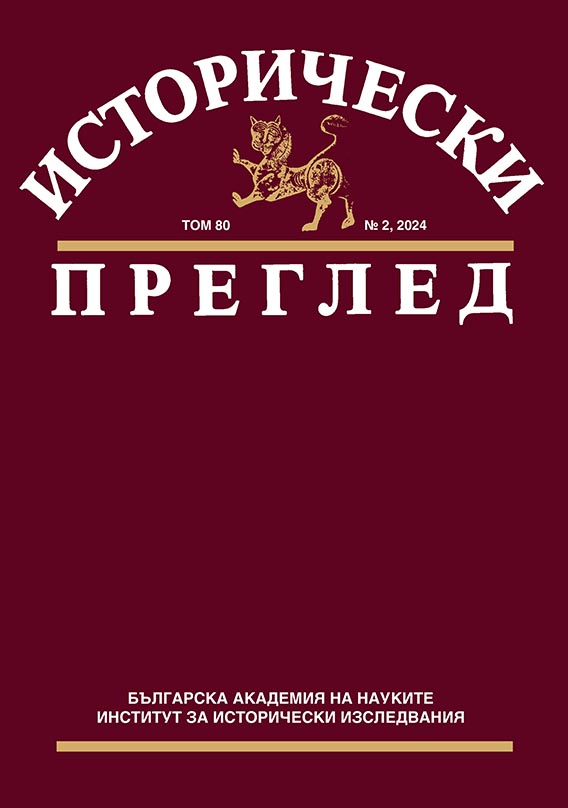
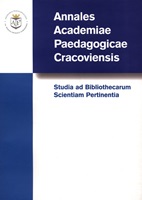
Konferencje poświęcone zagadnieniom bibliologicznym, prasoznawczym i dziejom bibliotek Krakowa i Lwowa w XIX i XX stuleciu odbywały się dotąd cyklicznie co 2 lata w Krakowie. Przypadający jednak w 2009 roku jubileusz sprawił, że X Międzynarodowa Konferencja Naukowa zagościła w mieście nad Pełtwią. Organizatorami tej edycji konferencji były: Instytut Informacji Naukowej i Bibliotekoznawstwa Uniwersytetu Pedagogicznego im. Komisji Edukacji Narodowej w Krakowie oraz Katedra Bibliotekoznawstwa i Bibliografii Lwowskiego Narodowego Uniwersytetu im. Iwana Franki we Lwowie. Obrady odbywały się w dniach 20–21 października 2009 roku, natomiast ostatni dzień przeznaczony był na zwiedzanie dawnych kresowych rezydencji magnackich w Złoczowie, Podhorcach i Olesku.
More...

Review of: Barbara Góra: Biblioteka Wyższego Seminarium Duchownego w Pelplinie 1828–2000, Wydawnictwo Naukowe Akademii Pedagogicznej, Kraków 2007, 571 s.
More...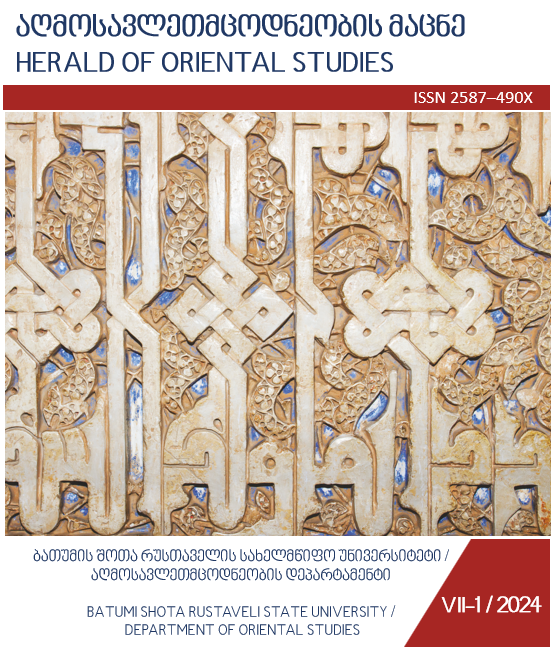
The Sanjak-Beg Abashidzes from Batumi settled in Adjara from Imereti, namely from Saeri-Stavo of Argveti, in the 16th century. Adjara was then conquered by the Ottomans. The Abashidzes converted to Islam here and entered the service of the Ottoman state. The Ottoman Sultan gave them lands and estates and gave them the title of Sanjak Beg of Lazistan.The Abashidzes were large landowners in Adjara. The article discusses the land ownership and land use issues of the Sanjak-Beg Abashidzes of Batumi. After the implementation of the agrarian reform (Tanzimat) in the Ottoman Empire, the Agha-Begs no longer had private property. In return, they were assigned hereditary pensions, but the Abashidzes, like the rest of the Agha-begs of the Ottoman Empire, were left with the right of ownership and use.During the Ottoman rule, there was a continuous struggle between the state agencies and local landowners regarding land and estates. This struggle continued during Russian domination. During this period, the Sanjak-Beg Abashidzes from Batumi started mass sale of land and estates. They were also engaged in leasing and mortgaging pieces of land. The income in a form of natural products or money received from this was the main source of their existence. The article discusses the legal status of the Sanjak-Beg Abashidzes of Batumi. It is emphasized that during the Soviet regime they suffered severe economic and political oppression.
More...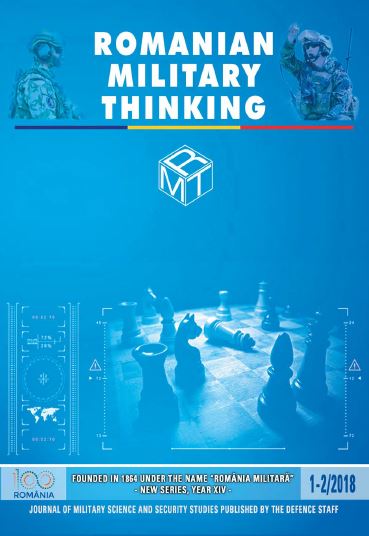
During the interwar period, the common factor of the relations between Romania and Poland was represented by their major interest in countering an unprovoked attack from Soviet Russia – USSR. Meanwhile, the rich medieval tradition, the cultural, political and spiritual interferences provided the basis of the mutual relations between the two countries. Romanian-Polish relations were supported and encouraged by France, which was interested in achieving and maintaining a “cordon sanitaire” against the Bolshevik/Soviet threat. They were influenced by political and diplomatic leaders of the two countries, in Poland, Marshal Józef Pilsudski, and in Romania, King Ferdinand, Queen Mary and Nicolae Iorga. Romania and Poland evolved into a complex and sensitive geopolitical space, that of Central and Eastern Europe, acting politically, diplomatically and military to build relationships based on mutual recognition of borders and support from France and the United Kingdom.
More...
The unification of Basarabia with Romania led to increasing anti-Romanian propaganda carried out by the internal and external forces that opposed to the decision democratically adopted by the legitimate representatives of the inhabitants of Basarabia at 27 March/9 April 1918. Agents from the East or among the local population tried to lead Basarabians into believing that the Romanian authorities opposed the reforms, especially the agrarian reform and the universal suffrage. The leaders of the Basarabian Romanians and the civil and military representatives of the Romanian state made significant efforts to eliminate the effects of the anti-Romanian propaganda theses. Unfortunately, many of these theses are still used today in the media and online, highlighting the negative aspects of the Romanian presence in Basarabia at that time and deliberately ignoring the martyrdom of the Romanians from Basarabia during the Soviet occupations.
More...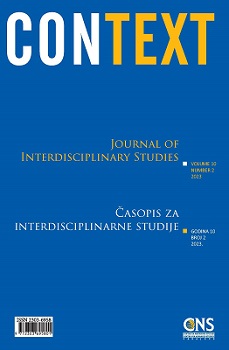
This paper traces the development of the Orthodox Church institutions in Serbia and Bosnia-Herzegovina during the de-Ottomanization process of Southeastern Europe in the 19th and early 20th centuries. I focus on the Muslim population’s responses, primarily by institutions and intellectuals, to events that followed the autonomy of the Belgrade Metropolitanate gained in 1831. The Orthodoxy’s increasing influence and the declining influence of Islam on social trends and the formation of political ideas and approaches are also detected. The ‘Eastern question’ still has significant protagonists in the Balkans, so these relations have their geopolitical implications. Given the holistic approach, attention is paid to this relationship in the wider Balkan and even global context due to clear links in social movements during the de-Ottomanization of the Balkans, beyond Bosniak-Serb relations. The analysis also includes the consequences of certain religious and popular teachings within these universal missions on the ideological and cultural conflicts.
More...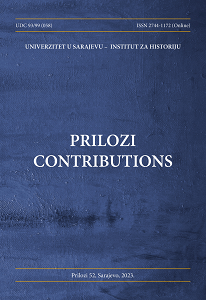
Review of: Husref Tahirović, Dr. Isak Samokovlija: Život u bijelom mantilu. Sarajevo: Akademija nauka i umjetnosti Bosne i Hercegovine, 2023, 200 str.
More...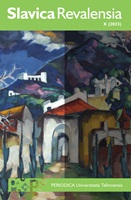
This unconventional dictionary, having over 100 entries, is the first attempt ever to list dogs that belonged to Russian turn-of-the-century and 20th-century writers (for example, Alexander Blok, Anton Chekhov, Vladimir Mayakovsky, Maximilian Voloshin, etc.).
More...
The article is an attempt to find, in Soviet poetry exemplified by poetry for children, reminiscences and allusions to classical or modernist poetry. Thus, Marshak’s typically Soviet propagandist poem “Nash gerb” (“Our Coat of Arms”) is traced back to Cherubina de Gabriac's poem of the same title. Children’s verse by Marshak, as well as some lyrical and satirical poetry, comprise the main material of the paper. Some examples of Marshak’s influence on posterior Russian poetry are analyzed.
More...
This article examines the history of formation and development of catechesis in Estonian Orthodox congregations in 1866–1940. Catechesis, originally a form of youth work in the Lutheran Church, was borrowed and “domesticated” as an educational practice by the Orthodox Eparchy of Riga, and later by the Estonian-speaking congregations of Estonian Apostolic-Orthodox Church, as early as in the second half of the 19th century. The first part of this article is retrospective to the introduction of catechism classes as a form of catechesis for church youth in the Estonian Orthodox congregations in Riga Eparchy until 1917. The second part of the article explores the development of catechism teaching in the EAOC congregations and the discussion concerning the catechism and youth work in church periodicals in 1918–1933. The third part deals with the EAOC catechism teaching practice, including the development of youth work during the silent era in 1934–1940.
More...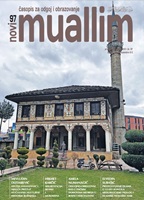
The article presents a brief review of the life of shaikh al-Islam, Mustafa Hayri Efendi (1867-1921), who happened to be the head of the Ottoman Meshihat at the time of the beginning of the First World War with an emphasis on his fatwa on big jihad. In 1914, when the Ottoman Empire joined the alliance of Germany and Austria–Hungary against Russia, France and England, he issued a fatwa about the great jihad. Since the Ottoman Empire was still, though in its last years only formally, a state managed by the rule of the Shariah, it was required of the religious head of the state, shaikh al-Islam, to issue a fatwa regarding the jihad. The fatwa obligates all the Muslims of the Muslim world, thus including the Bosniaks, against the enemy of the Ottoman Empire. The religious head of the Muslims in Bosnia and Herzegovina at the time was Džemaluddin-ef. Čaušević. Fatwa was read in public in Sarajevo, on December 11, 1914, before over 3000 people after the jummah salah, in Gazi Husrev-bey’s mosque, and before the troops of the AustroHungarian army in Bosnia and Herzegovina in March 1915.
More...
Review of: Zénó Vernyik, Cities of Saviors. Urban Space in E. E. Cummings’ Complete Poems, 1904-1962 and Peter Ackroyd’s Hawksmoor. AMERICANA eBOOKS, University of Szeged, 2015, 170 pages
More...